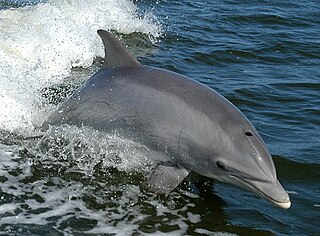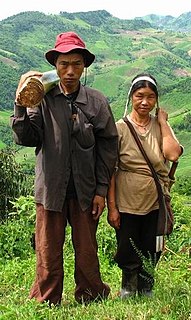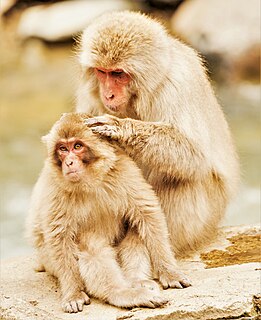 W
WThe American badger is a North American badger, similar in appearance to the European badger although not closely related. It is found in the western and central United States, northern Mexico, and south-central Canada to certain areas of southwestern British Columbia.
 W
WAustralopithecus afarensis is an extinct species of australopithecine which lived from about 3.9–2.9 million years ago (mya) in the Pliocene of East Africa. The first fossils were discovered in the 1930s, but major fossil finds would not take place until the 1970s. From 1972–1977, the International Afar Research Expedition—led by anthropologists Maurice Taieb, Donald Johanson, and Yves Coppens—unearthed several hundreds of hominin specimens in Hadar, Ethiopia, the most significant being the exceedingly well-preserved skeleton AL 288-1 ("Lucy") and the site AL 333. Beginning in 1974, Mary Leakey led an expedition into Laetoli, Tanzania, and notably recovered fossil trackways. In 1978, the species was first described, but this was followed by arguments for splitting the wealth of specimens into different species given the wide range of variation which had been attributed to sexual dimorphism. A. afarensis probably descended from A. anamensis and possibly gave rise to Homo, though the latter hypothesis is not without dissent.
 W
WThe honey badger, also known as the ratel, is a mammal widely distributed in Africa, Southwest Asia, and the Indian subcontinent. Because of its wide range and occurrence in a variety of habitats, it is listed as Least Concern on the IUCN Red List.
 W
WThe bonobo, also historically called the pygmy chimpanzee and less often, the dwarf or gracile chimpanzee, is an endangered great ape and one of the two species making up the genus Pan; the other being the common chimpanzee. Although bonobos are not a subspecies of chimpanzee, but rather a distinct species in their own right, both species are sometimes referred to collectively using the generalized term chimpanzees, or chimps. Taxonomically, the members of the chimpanzee/bonobo subtribe Panina are collectively termed panins.
 W
WBottlenose dolphins, the genus Tursiops, are the most common members of the family Delphinidae, the family of oceanic dolphin. Molecular studies show the genus contains three species: the common bottlenose dolphin, the Indo-Pacific bottlenose dolphin, and the Burrunan dolphin. Bottlenose dolphins inhabit warm and temperate seas worldwide, being found everywhere except for the Arctic and Antarctic Circle regions. Their name derives from the Latin tursio (dolphin) and truncatus for their characteristic truncated teeth.
 W
WThe Brown weeper capuchin or Venezuelan brown capuchin is a species of gracile capuchin monkey from Venezuela.
 W
WThe capuchin monkeys are New World monkeys of the subfamily Cebinae. They are readily identified as the "organ grinder" monkey, and have been used in many movies and television shows. The range of capuchin monkeys includes some tropical forests in Central America and South America as far south as northern Argentina. In Central America, where they are called white-faced monkeys ("carablanca,") they usually occupy the wet lowland forests on the Caribbean coast of Costa Rica and Panama and deciduous dry forest on the Pacific coast.
 W
WThe Panamanian white-faced capuchin, also known as the Panamanian white-headed capuchin or Central American white-faced capuchin, is a medium-sized New World monkey of the family Cebidae, subfamily Cebinae. Native to the forests of Central America, the white-faced capuchin is important to rainforest ecology for its role in dispersing seeds and pollen.
 W
WThe tufted capuchin, also known as brown capuchin, black-capped capuchin, or pin monkey is a New World primate from South America. As traditionally defined, it is one of the most widespread primates in the Neotropics, but it has recently been recommended considering the black-striped, black and golden-bellied capuchins as separate species in a new genus, thereby effectively limiting the tufted capuchin to the Amazon basin and nearby regions.
 W
WWhite-fronted capuchin can refer to any of a number of species of gracile capuchin monkey which used to be considered as the single species Cebus albifrons. White-fronted capuchins are found in seven different countries in South America: Bolivia, Brazil, Colombia, Venezuela, Ecuador, Peru, and Trinidad and Tobago.
 W
WThe chimpanzee, also known as the common chimpanzee, robust chimpanzee, or simply chimp, is a species of great ape native to the forest and savannah of tropical Africa. It has four confirmed subspecies and a fifth proposed subspecies. The chimpanzee and the closely related bonobo are classified in the genus Pan. Evidence from fossils and DNA sequencing shows that Pan is a sister taxon to the human lineage and is humans' closest living relative.
 W
WThe Colombian white-faced capuchin, also known as the Colombian white-headed capuchin or Colombian white-throated capuchin, is a medium-sized New World monkey of the family Cebidae, subfamily Cebinae. It is native to the extreme eastern portion of Panama and the extreme north-western portion of South America in western Colombia and northwestern Ecuador.
 W
WThe common degu, or, historically, the degu, is a small hystricomorpha rodent endemic to the Chilean matorral ecoregion of central Chile. The name degu on its own indicates either the entire genus Octodon or, more commonly, just the common degu. Common degus belong to the parvorder Caviomorpha of the infraorder Hystricognathi, along with the chinchilla and guinea pig. The word degu comes from the indigenous language of Chile, Mapudungun, and the word dewü, meaning 'mouse' or 'rat'.
 W
WThe crab-eating macaque, also known as the long-tailed macaque, is a cercopithecine primate native to Southeast Asia. It is referred to as the cynomolgus monkey in laboratories. It has a long history alongside humans; it has been alternately seen as an agricultural pest, sacred animal in some temples, and more recently, the subject of medical experiments.
 W
WThe common bottlenose dolphin or Atlantic bottlenose dolphin is the most well-known species of the family Delphinidae.
 W
WElephants are mammals of the family Elephantidae and the largest existing land animals. Three species are currently recognised: the African bush elephant, the African forest elephant, and the Asian elephant. Elephantidae is the only surviving family of the order Proboscidea; extinct members include the mastodons. The family Elephantidae also contains several now-extinct groups, including the mammoths and straight-tusked elephants. African elephants have larger ears and concave backs, whereas Asian elephants have smaller ears, and convex or level backs. Distinctive features of all elephants include a long proboscis called a trunk, tusks, large ear flaps, massive legs, and tough but sensitive skin. The trunk is used for breathing, bringing food and water to the mouth, and grasping objects. Tusks, which are derived from the incisor teeth, serve both as weapons and as tools for moving objects and digging. The large ear flaps assist in maintaining a constant body temperature as well as in communication. The pillar-like legs carry their great weight.
 W
WThe western lowland gorilla is one of two subspecies of the western gorilla that lives in montane, primary and secondary forest and lowland swampland in central Africa in Angola, Cameroon, Central African Republic, Republic of the Congo, Democratic Republic of the Congo, Equatorial Guinea and Gabon. It is the nominate subspecies of the western gorilla, and the smallest of the four gorilla subspecies.
 W
WHomo erectus is an extinct species of archaic human from the Pleistocene, with its earliest occurrence about 2 million years ago, and its specimens are among the first recognisable members of the genus Homo. H. erectus was the first human ancestor to spread throughout the Old World, having a distribution in Eurasia extending from the Iberian Peninsula to Java. African populations of H. erectus are likely to be the direct ancestors to several human species, such as H. heidelbergensis and H. antecessor, with the former generally considered to have been the direct ancestor to Neanderthals and Denisovans, and sometimes also modern humans. Asian populations of H. erectus may be ancestral to H. floresiensis and possibly to H. luzonensis. As a chronospecies, the time of the disappearance of H. erectus is a matter of contention. There are also several proposed subspecies with varying levels of recognition. The last known record of morphologically recognisable H. erectus are the Solo Man specimens from Java, around 117–108,000 years ago.
 W
WHumans are a species of highly intelligent primates. They are the only extant members of the subtribe Hominina and—together with chimpanzees, gorillas, and orangutans—are part of the family Hominidae. Humans are terrestrial animals, characterized by their erect posture and bipedal locomotion; high manual dexterity and heavy tool use compared to other animals; open-ended and complex language use compared to other animal communications; larger, more complex brains than other primates; and highly advanced and organized societies.
 W
WThe macaques constitute a genus (Macaca) of gregarious Old World monkeys of the subfamily Cercopithecinae. The 23 species of macaques inhabit ranges throughout Asia, North Africa, and Gibraltar. Macaques are principally frugivorous, although their diet also includes seeds, leaves, flowers, and tree bark. Some species, such as the crab-eating macaque, subsist on a diet of invertebrates and occasionally small vertebrates. On average, southern pig-tailed macaques in Malaysia eat about 70 large rats each per year. All macaque social groups are matriarchal, arranged around dominant females.
 W
WThe Japanese macaque, also known as the snow monkey, is a terrestrial Old World monkey species that is native to Japan. They get their name "snow monkey" because some live in areas where snow covers the ground for months each year – no other non-human primate is more northern-living, nor lives in a colder climate. Individuals have brownish grey fur, pinkish-red faces, and short tails. Two subspecies are known.
 W
WThe mandrill is a primate of the Old World monkey (Cercopithecidae) family. It is one of two species assigned to the genus Mandrillus, along with the drill. Both the mandrill and the drill were once classified as baboons in the genus Papio, but they now have their own genus, Mandrillus. Although they look superficially like baboons, they are more closely related to Cercocebus mangabeys. Mandrills are found in southern Cameroon, Gabon, Equatorial Guinea, and Congo. Mandrills mostly live in tropical rainforest and in very large groups. Mandrills have an omnivorous diet consisting mostly of fruits and insects. Their mating season peaks in July to September, with a corresponding birth peak in December to April.
 W
WSouthwest Asian Neanderthals are Neanderthals that lived in Turkey, Lebanon, Syria, Palestine, Israel, Iraq, and Iran, the southernmost expanse of their known range. Although their arrival in Asia is not well-dated, early Neanderthals occupied the region apparently until about 100,000 years ago. At this time, Homo sapiens seems to have replaced them in one of the first anatomically modern expansions out of Africa. In their turn, starting around 80,000 years ago, Neanderthals seem to have replaced Homo sapiens in Southwest Asia. They inhabited the region until about 55,000 years ago.
 W
WOrangutans are great apes native to Indonesia and Malaysia. They are found in the rainforests of Borneo and Sumatra, but during the Pleistocene they ranged throughout Southeast Asia and South China. Classified in the genus Pongo, orangutans were originally considered to be one species. From 1996, they were divided into two species: the Bornean orangutan and the Sumatran orangutan. In 2017, a third species, the Tapanuli orangutan, was identified. The orangutans are the only surviving species of the subfamily Ponginae, who split from humans, chimpanzees and gorillas 19.3 to 15.7 million years ago (mya).
 W
WOtters are carnivorous mammals in the subfamily Lutrinae. The 13 extant otter species are all semiaquatic, aquatic or marine, with diets based on fish and invertebrates. Lutrinae is a branch of the Mustelidae family, which also includes weasels, badgers, mink, and wolverines, among other animals.
 W
WThe sea otter is a marine mammal native to the coasts of the northern and eastern North Pacific Ocean. Adult sea otters typically weigh between 14 and 45 kg, making them the heaviest members of the weasel family, but among the smallest marine mammals. Unlike most marine mammals, the sea otter's primary form of insulation is an exceptionally thick coat of fur, the densest in the animal kingdom. Although it can walk on land, the sea otter is capable of living exclusively in the ocean.
 W
WThe genus Pan consists of two extant species: the chimpanzee and the bonobo. Taxonomically, these two ape species are collectively termed panins; however, both species are more commonly referred to collectively using the generalized term chimpanzees, or chimps. Together with humans, gorillas, and orangutans they are part of the family Hominidae. Native to sub-Saharan Africa, chimpanzees and bonobos are currently both found in the Congo jungle, while only the chimpanzee is also found further north in West Africa. Both species are listed as endangered on the IUCN Red List of Threatened Species, and in 2017 the Convention on Migratory Species selected the chimpanzee for special protection.
 W
WThe sea otter, Enhydra lutris, is a member of the Mustelidae that is fully aquatic. Sea otters are the smallest of the marine mammals, but they are also the most dexterous. Sea otters are known for their ability to use stones as anvils or hammers to facilitate access to hard-to-reach prey items. There are three recognized subspecies of otters, all of which exhibit tool use behavior in some capacity. Tool use behavior is more associated with geographic location than sub-species. Most behavioral research has been conducted on Enhydra lutris nereis, the Californian otter, and some has been conducted on Enhydra lutris kenyoni, the Alaska sea otter. Sea otters frequently use rocks as anvils to crack open prey, and they are also observed to rip open prey with their forepaws. While lying on their backs, otters will rip apart coral algae to find food among the debris. The frequency of tool use varies greatly between geographic regions and individual otters. Regardless of the frequency, the use of tools is present in the behavioral repertoire of sea otters and is performed when most appropriate to the situation.